Great-uncle Stephen was a pirate from Penzance
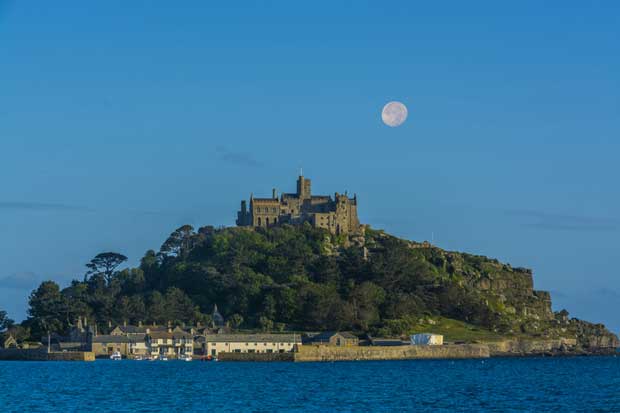
St Michael’s Mount, Marazion.
Searching for forebears takes an exciting turn for two NZ Life & Leisure writers. Emma discovers a ship’s captain with a fortune in Spanish gold and Cheree learns that even great-great grandmothers made dodgy choices in men. Armed with DNA saliva samples and a list of their known ancestors, Emma and Cheree turn to ancestry.com for clues about their origins and their ancestors.
Words: Emma Rawson
It is a myth in Mum’s family that we are descended from pirates. When she was a child, her father found a cannonball buried in the backyard veggie patch of her family home in Penzance, Cornwall. My childhood trips to Cornwall fuelled my imagination with further notions of rapscallion ancestors. At St Michael’s Mount, a tidal island fort near Penzance complete with a castle and canons, it was easy to imagine the land filled with sailors, smugglers and pirates. But was I descended from one of them?
A DNA test through Ancestry.com revealed I’m a real mongrel: 28% of my DNA can be traced to Western Europe, 28% to Scandinavia, 19% to Iberian Peninsula (Spain and Portugal) and I have 16% Irish/Celtic blood (with some trace ancestry elsewhere).
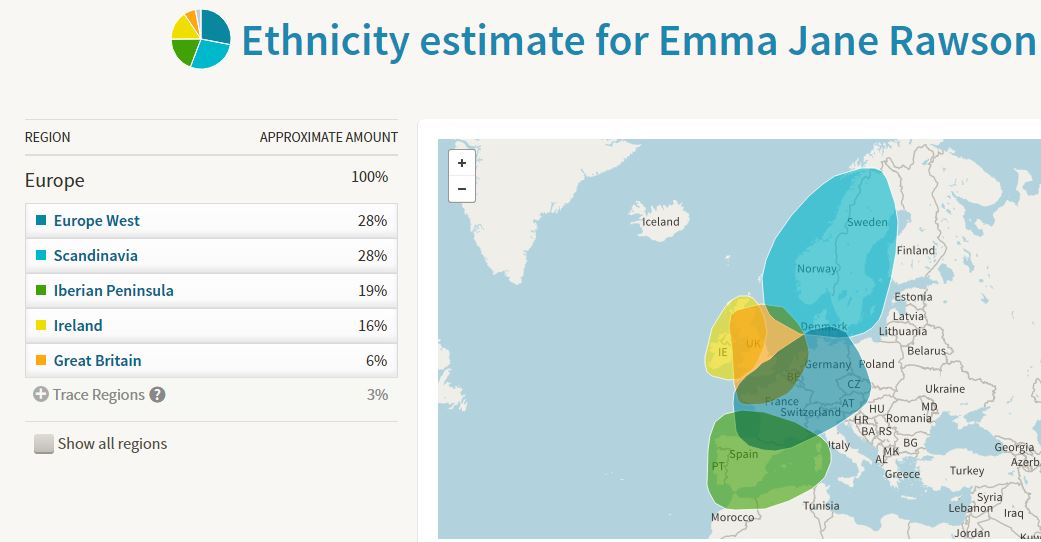
“The DNA result is an estimate based on our understanding of clusters of genetic markers,” says genealogist specialist Brad Argent of Ancestry.com
“Your ancestors are all from Europe but what’s unusual there’s 20% Spanish blood. Often when you see Irish and Spanish blood connected it means you have relatives from Southern Ireland, Wales or Cornwall. But 20% Spanish blood is pretty high you could expect to have a grandparent that was born in Spain.”
Curious. You would never think by looking at me that I might have Spanish blood. There’s a family portrait Mum is really fond of, taken when I was a teenager. My beaming parents and my brother are all tanned from summer days at the Whangamata bach. Meanwhile, I am a luminous white – partially due to pale skin inherited from my red-headed grandmother and partially due to my holiday job inside the local supermarket.
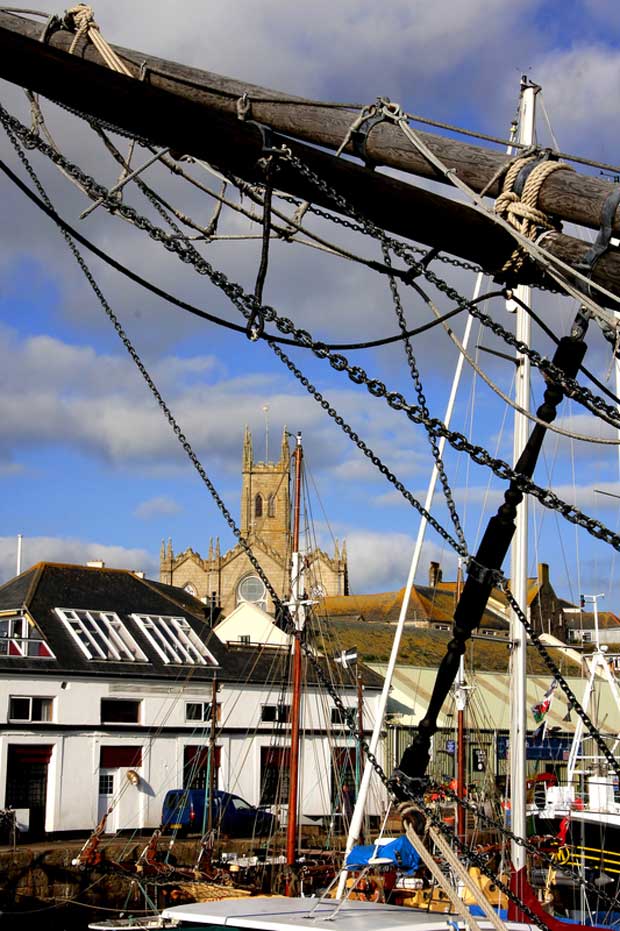
Penzance harbour, present day. Photo: Dreamstime.
Mum’s maiden name, Hutchen, is well-known in Cornwall. Using Ancestry.com, I have traced back the Hutchens to an ancestor called Thomas Hutchens who was born in 1578 in St Buryan. A little more removed on the family tree is Captain Stephen Hutchens – a navy sailor fighting for the British Crown during the reign of Queen Anne.
He was captain of the HMS Portland when England was at war with the Dutch and the French. From what I can gather using internet research, he worked to protect merchant ships from attack. In his final battle, in 1709, he reclaimed the HMS Coventry which had been captured by the French five years before. The battle cost the lives of nine Englishmen and 70 Frenchmen and Stephen died shortly after in Kingston, Jamaica aged 40. He left his 18,000 pound fortune of Spanish gold (which today equals nearly 10 million British pounds or NZ$18.5m) to the town of Penzance. Hutchens House, an almshouse for the poor, was built using these funds. I’m yet to discover how Stephen made his fortune but I like to suspect it came by nefarious means somewhere in the Caribbean so, of course, he was a pirate after all. And wasn’t he such a kindly pirate… Along with the bequeath of Spanish gold, he also provided for his friend:
“I give devise and bequeath unto my worthy good friend Henry Pendarves, Minister of the Parish of Paul in the County of Cornwall, the sum of £20 Sterling to buy him a Suit of Mourning to wear in memory of me.”
TALL TALES OF MURDEROUS EX HUSBANDS… AND DODGY UNCLE DICK
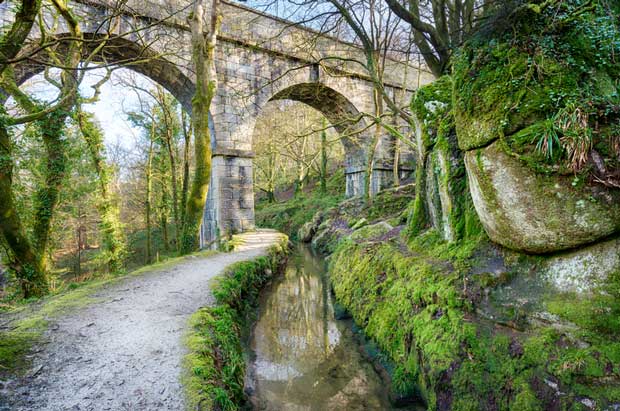
The historic Treffry Viaduct and aqueduct across the Luxulyan valley in Cornwall. Photo: Dreamstime
Words: Cheree Morrison
I didn’t really know much about my roots before I set out on this adventure. I knew nothing about those who’d climbed aboard ships bound for the other side of the world, who’d said “Goodbye” to families and lands they knew, in search of something better – or running from something worse? One 2016-morning about nine I began looking for them and, when I surfaced again, it was midday and I was in the 1400s somewhere in Cornwall (any other descendants of the Cornish Rosevears out there?).
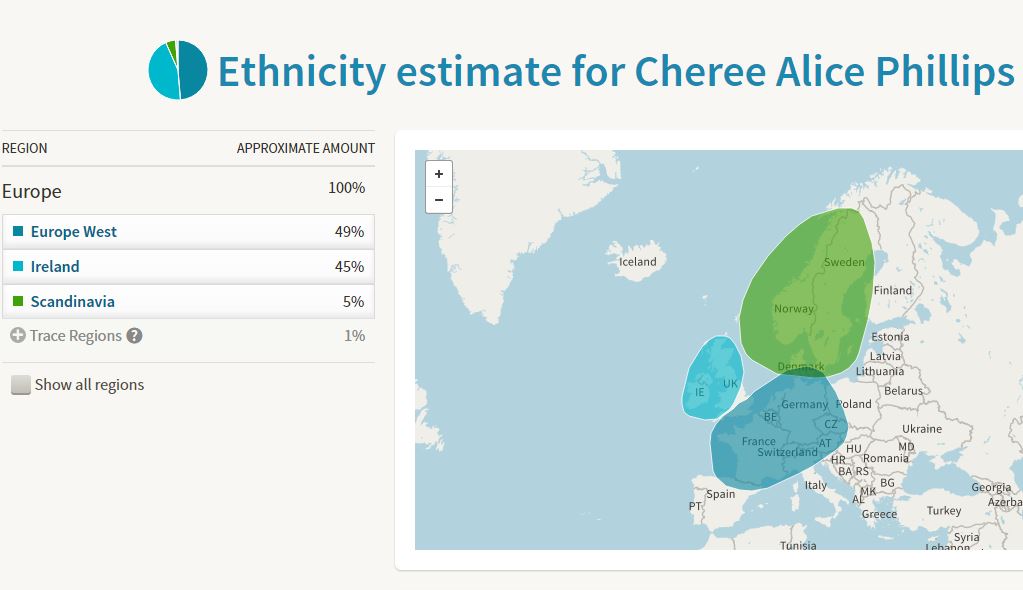
I learnt so much. It started with the DNA information that I’m 49% German, 45% Irish/Cornish and 5% Scandinavian. Since setting out I’ve I read newspaper clippings, birth certificates and baptism records from as far back as the 1600s. I discovered my great-great-great Grandmother Clara Daisy Morris from Dunedin had a first husband who threatened to murder her to avoid paying maintenance for their children. This, according to the judge, despite him earning “the colossal sum of £2, 12s, 2d” (read the newspaper clipping below). I’ve tracked the Rosevear branch of my grandfather’s side back to 1462 in Luxulyan, Cornwall (hopefully there’s a castle somewhere to which I can lay claim ), and have planned a roadtrip to Leer, Germany next April so my sister and I can walk the same streets as our ancestors of the 1600s. And, late one evening when I probably should have been asleep, I learned that someone else had been searching for the elusive forebear Basilius Hermannus Middendorf. I hadn’t know that my Grandfather Des, who passed away two years ago, had also been on Basilius’ trail. Completely unknown to me, I’d been following my grandfather’s footsteps.
Trying to find out which of my ancestors landed first in NZ has been unsuccessful. It’s a dead-end as most of the immigrating ship’s manifests are not yet in a digitally searchable system. But it hasn’t mattered. The best thing about researching my family tree is that it starts conversations. It’s only through chatting to my Nana that I discovered Richard Ernest Sessions was not just a name and a date. He was Uncle Dick, for all time in Nana’s bad books as he ignored her pleas not to drive her car while she was away on her honeymoon – the motor fell out later).
A word of warning to those who venture down the genealogy path – it’s incredibly addictive. Google Maps becomes the new best friend as little lanes and distant addresses are zoomed in on. During one lunchhour I managed pinpoint the exact house in which our advertising manager’s great-great grandmother was born. Friends, family and workmates will tire quickly of you blurting out “I’m into the 1400s!” whenever you stumble upon something new. It may also cause expensive travel to places never heard of ten days ago. But it’s all great fun so go forth and explore with earnst – you may even find an Ernest.
August is Family History month. Want to learn more about your own family history? Enter our competition to be in to win a DNA testing kit from Ancestry.com
Do you have an interesting family history? Write to us at info@thisnzlife.co.nz to let us know.
Read more about Clara Daisy Morris
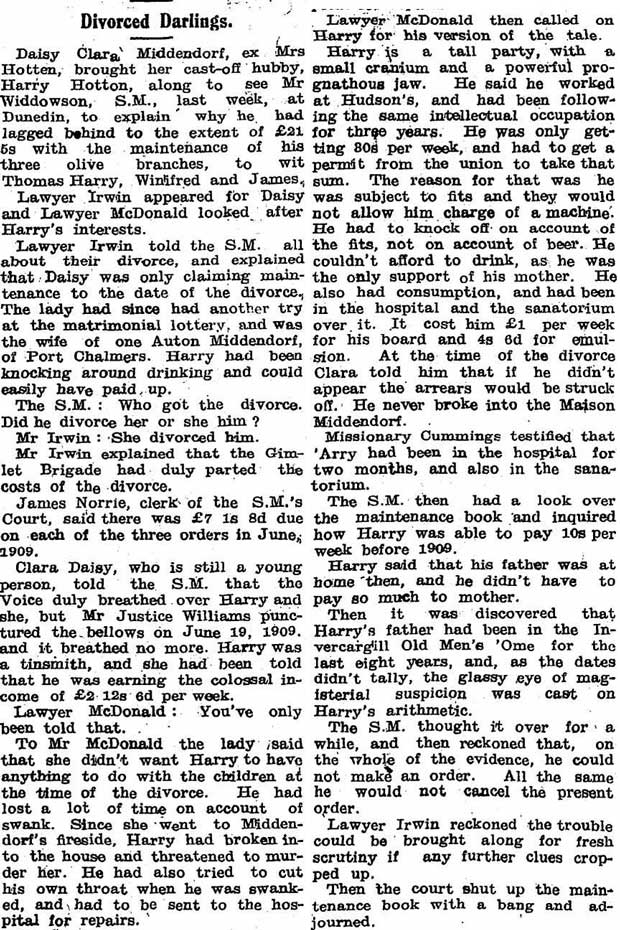
Clipping from a Dunedin newspaper circa 1910.


